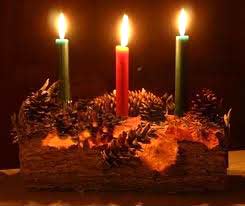On December 25th people around the globe will be celebrating something. Some will celebrate the birth of Jesus 2000+ years ago, while others will simply be observing traditions that have been held since long before a woman named Mary gave birth in the barn of a stingy innkeeper.
Here are a few facts that I found interesting when researching the origin of the holiday. There have been many a meme circulating on Facebook lately about “putting Christ back in Christmas” and I just feel like putting this out there before the day of festivities arrives.
What Do You Celebrate?
Yule
Long before the immaculate pregnancy was even conceived, people were celebrating in the dead of winter. In Scandinavia, Nordic peoples celebrated Yule as a time of light and birth during the darkest and coldest days of the year. It is no coincidence that Yule was celebrated from December 21st through the beginning of January. The Winter Solstice typically falls on the 21st or 22nd day of December.
Winter Solstice is known as the shortest day of the year, a time when the sun and the earth are farthest from each other. Symbolically it was celebrated as the death and rebirth of the sun, since on the Solstice there is the least amount of sunlight reaching the earth than during the entire year. After the Solstice, the days slowly begin to lengthen once again, the seasons on their way back toward summer.
Essentially, the Winter Solstice is indicative of the worst of the winter being in the past, with only warmth and light to look forward to. They celebrated by bringing a large log into the home and setting it ablaze. They would then feast until the log burned out, which could take as long as 12 days in some cases. The Norse folks believed that for every spark of fire on the Yule log, another calf or baby pig would be born.
Saturnalia
In Rome, a much warmer climate, they had a celebration during this time of year that was much different but still has similarities in custom. The ancient Romans honored Saturn, the god of agriculture, with a month of hedonism. Starting the week before Winter Solstice and lasting a full month, it was a celebration the involved a total party atmosphere.
Food and drink were generally plentiful during this time thanks to the bountiful fall harvests that preceded the season. During Saturnalia everything was flipped around. Slaves became masters, and peasants were handed control of cities.
Parallel to the Saturnalia celebrations, the Romans also celebrated Juvenalia during the same time. Juvenalia was a holiday to honor the children of Rome, and many of the upper class also celebrated the birth of the god Mithra on December 25th.
Christmas
In the beginning of Christianity, the main holiday observed was Easter in memory of the crucifixion and return of Jesus. It was not until the 4th century that the Church decided to make the birth of Jesus an official holiday. However, in the Christian bible there is no mention of the date of Jesus’ actual birth. In fact, many would argue that Christ’s birth occurred in the Spring since shepherds do not herd their sheep in the middle of winter. Puritans used this as an argument to not observe the holiday, since, to them, it was not really a legitimate one.
Pope Julius I chose December 25th as the day to recognize the birth of Christ. It is a widely held belief that this day was chosen as a way to absorb and adopt the Saturnalia festivities into the Christian religion. In doing so, Church leaders believed that the chances of Christmas being embraced by the heathens would be successful. By the Middle Ages, Christianity had largely replaced many pagan religions, along with their celebrations and traditions.
Christmas in America
Christmas was considered an English custom and as such, after the American Revolution, Christmas fell out of favor with Americans along with most other English traditions. It was not until 1870 that the U.S. government decided to make Christmas a nationally recognized federal holiday.
http://www.history.com/topics/christmas/history-of-christmas


